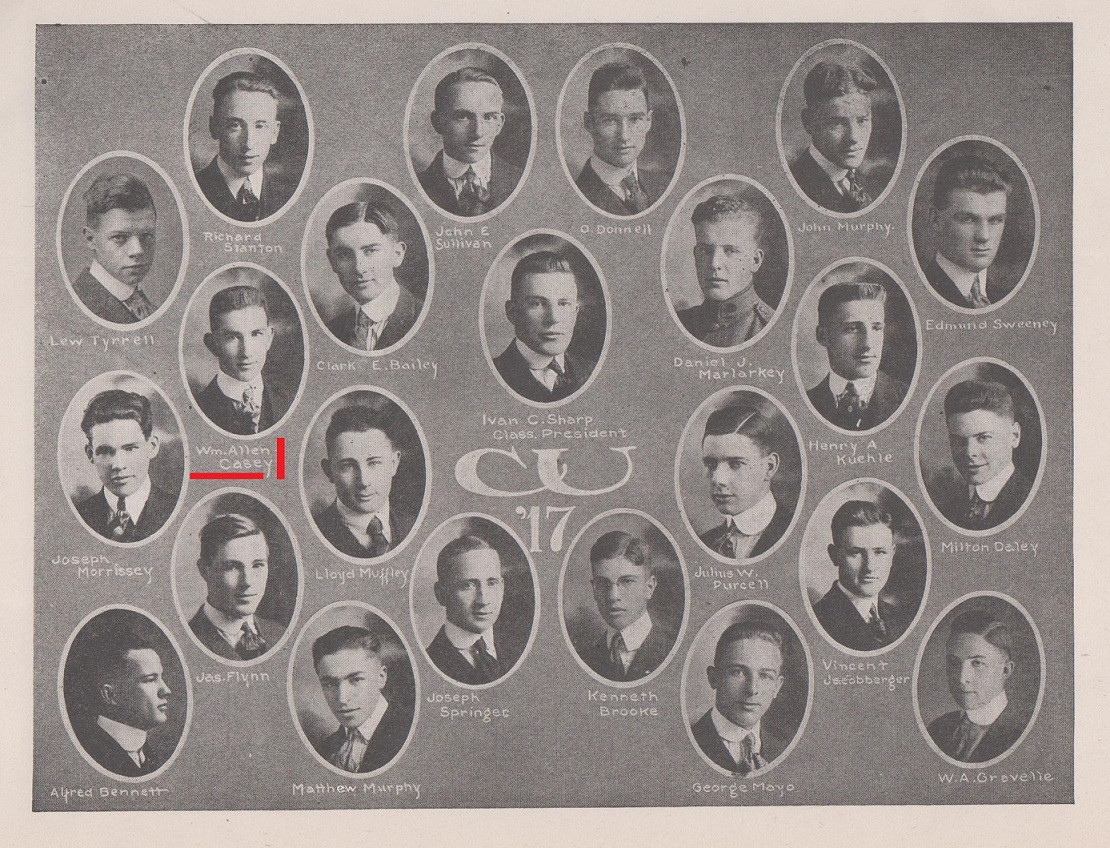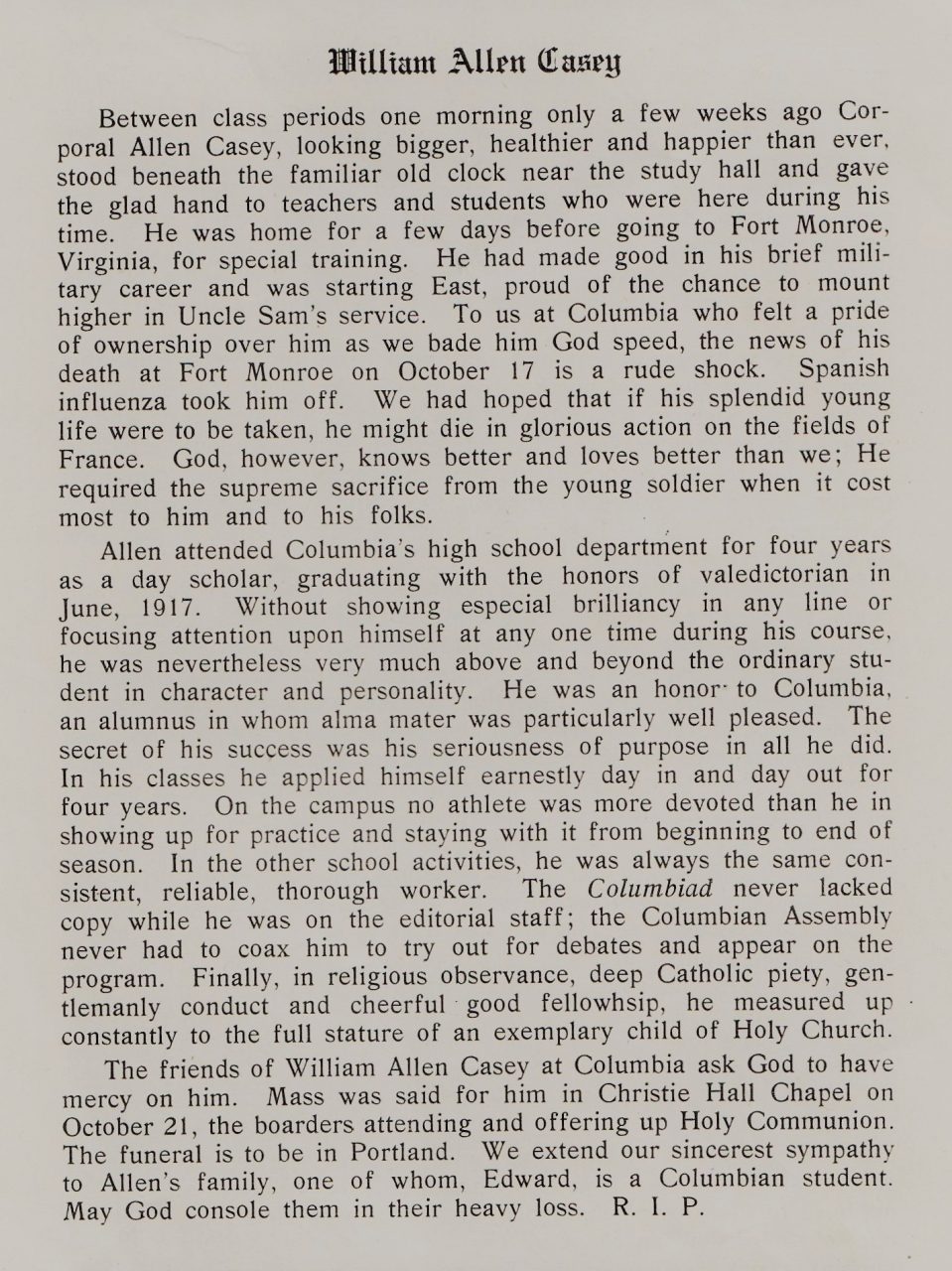The 1918 Spanish Influenza and Columbia University: what happened back then? Our long months of Covid-19 protocols and precautions has made the pandemic a century ago into a FAQ (frequently asked question) today. This arises in the context – at different points in recent semesters – of daily operations at the University of Portland experiencing MAJOR disruptions due to the 2020 Covid-19 pandemic: from remote teaching to cancelled events. And so, as we move step-by-step towards new patterns of 21st century interaction, here is some data about how the Spanish Flu was felt in the University community back in 1918. The short answer turns out to be boring, lacking excitement, and, is maybe, reassuring? The very few mentions found in our sources propose the totally undramatic conclusion that the Spanish Flu had little to no impact on classes or campus life.
Now, the longer answer. First, from 1901-1935 we operated under a different name and different circumstances. During the years of the Spanish flu pandemic enrollment was low (and those staying for degrees even fewer), with a mix of Boarders and commuters (Day-Dodgers). Today, a century later, enrollment is 3990+, anticipating, many, many earned diplomas in May. The 1920s comparative numbers follow:
- 1916-17 — — — 154 (26 diplomas)
- 1917-18 — — — 193 (17 diplomas)
- 1918-19 — — — 206 (15 diplomas)
- 1919-20 — — — 260 (18 diplomas)
The aim was learning. The degree-program was secondary. Students pursued a course of studies that included high school and college course work, but the degrees earned during those years were limited to the high school division (until 1924). College work and credit could be transferred, but often served simply as professional preparation; with students leaving campus and entering the work-force upon completing the course of commercial studies on campus.
Scouring the pages of The Columbiad, a monthly student publication, there is only one recorded death in the University family attributed to the Spanish Influenza; Wm. Allen Casey (died, October 17, 1918). He received a Science Diploma, graduating in 1917; of the twenty-six graduates, five missed the ceremony having already entered military service. Casey was the valedictorian and distinguished himself in debate while at school. He enlisted the following year and contracted the Spanish flu when stationed at the military training camp in Fort Monroe, Virginia. His name is on the Broken Wall Memorial commemorated there as one of three University World War I deaths.
An alumnus, but his death from the Spanish flu occurred a year later and across the continent.
As to disruptions of classes or activities. The 1918 fall football season was delayed and shortened because our league opponents cancelled school for a period of six weeks. It does not appear that classes were interrupted on the Bluff.

Columbiad XV.8, p. 220 (click to enlarge)
Then there is this poem, found in the Columbiad (January 1919, p. 45)
A Boarder’s Lament
The ‘flu’ may come and ‘flu’ may go.
But we go on forever.
The dance may stop and the picture slow,
We struggle on forever.
Day Dodgers loaf and make big dough,
We bone and bone forever
–Charles Lake, Diploma in English, 1920
p.s. Day-Dodgers refers to commuter students, used as a Boarder’s derisive / affectionate term of on-going envy and rivalry. Here the word ‘flu’ cannot be taken as a secure connection between the poem and the 1918 global epidemic. The poet may simply have found the word more amenable to versification than, say, mononucleosis or measles.
In an earlier post we showed that, from 1907-1934, the University advertised the campus as a wholesome and healthy garden spot outside Portland’s urban sprawl.
https://sites.up.edu/museum/spires-of-learning-reach-up-to-the-sky/
Citations:
The Columbiad, vol. XV.8 (June 1917), vol. XVII.1 (October 1918), vol. XVII.2 (January 1919).

Leave a Reply